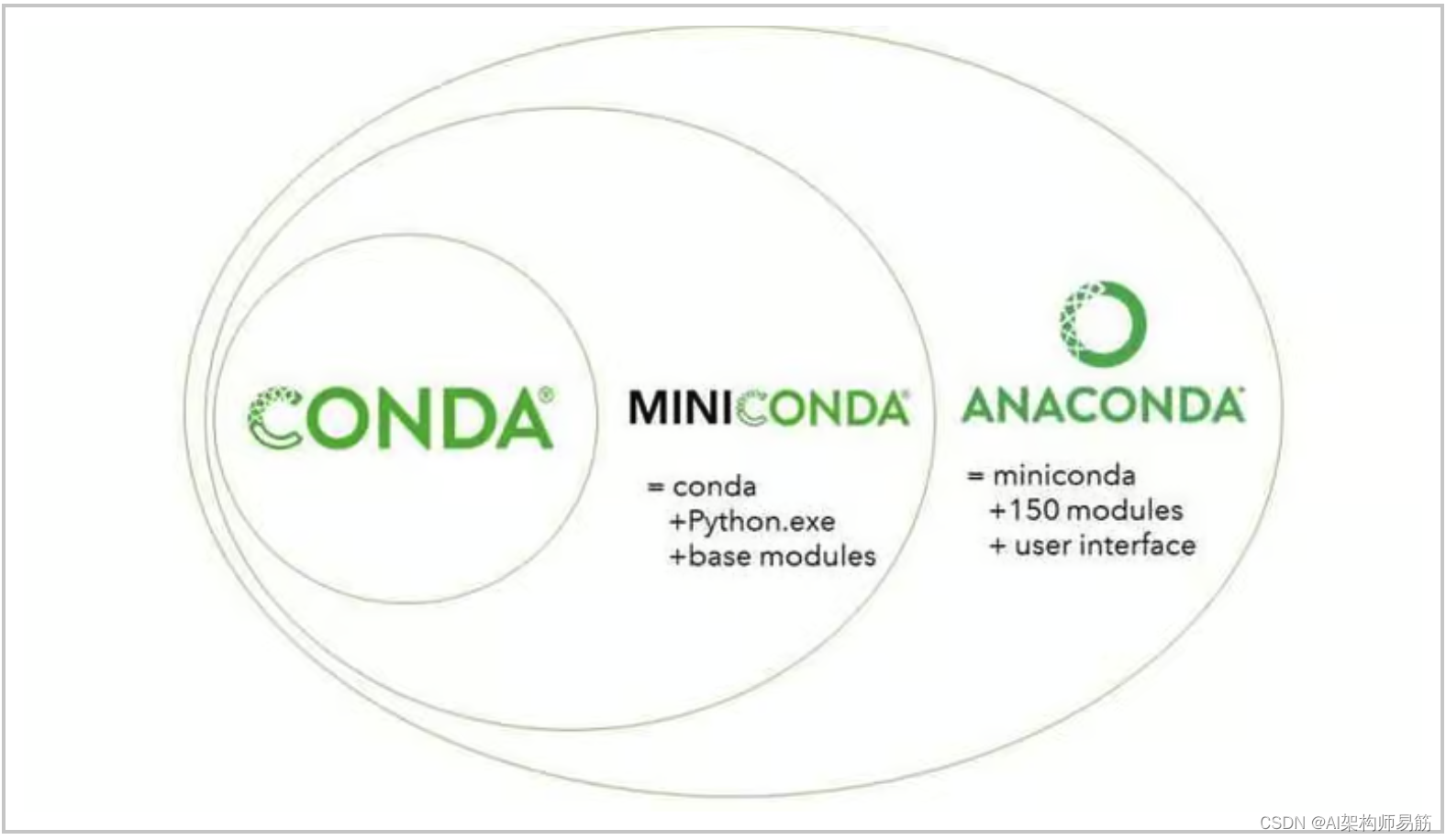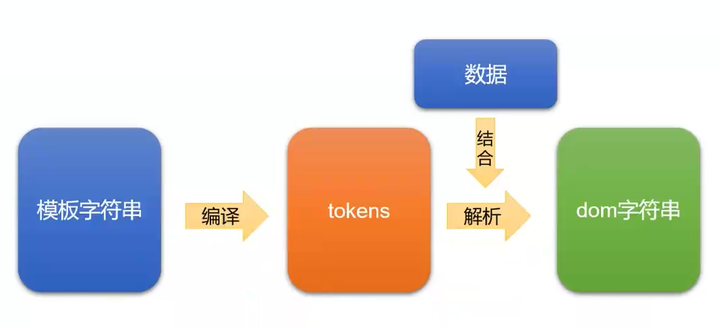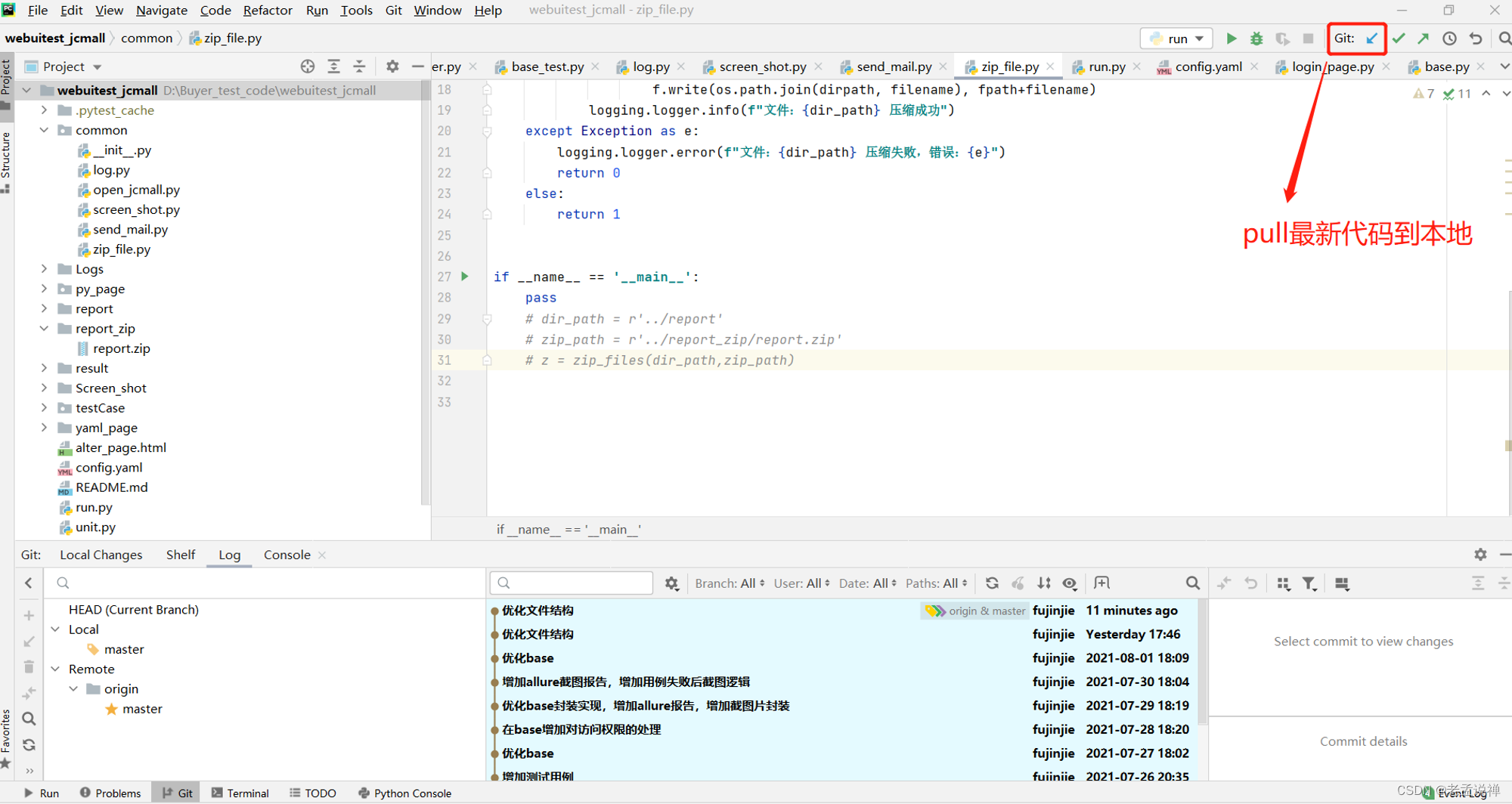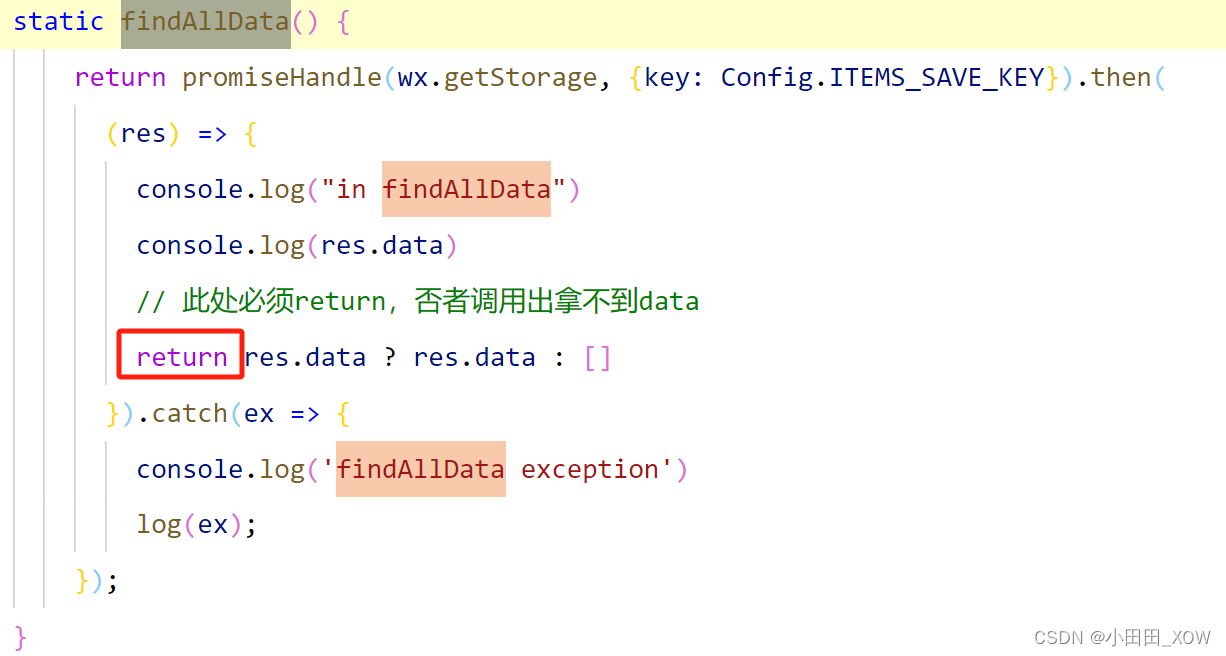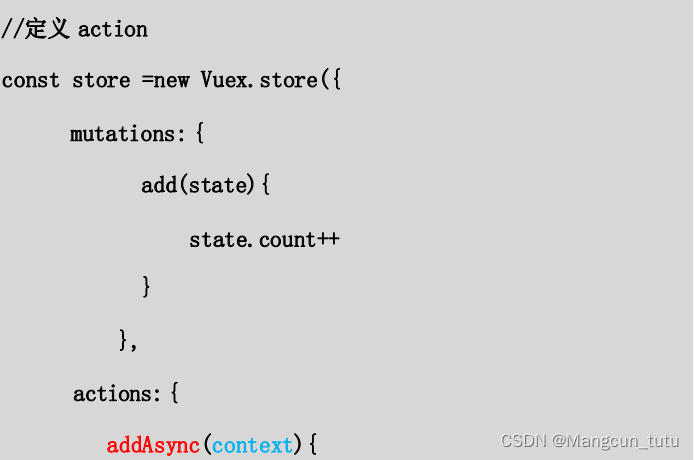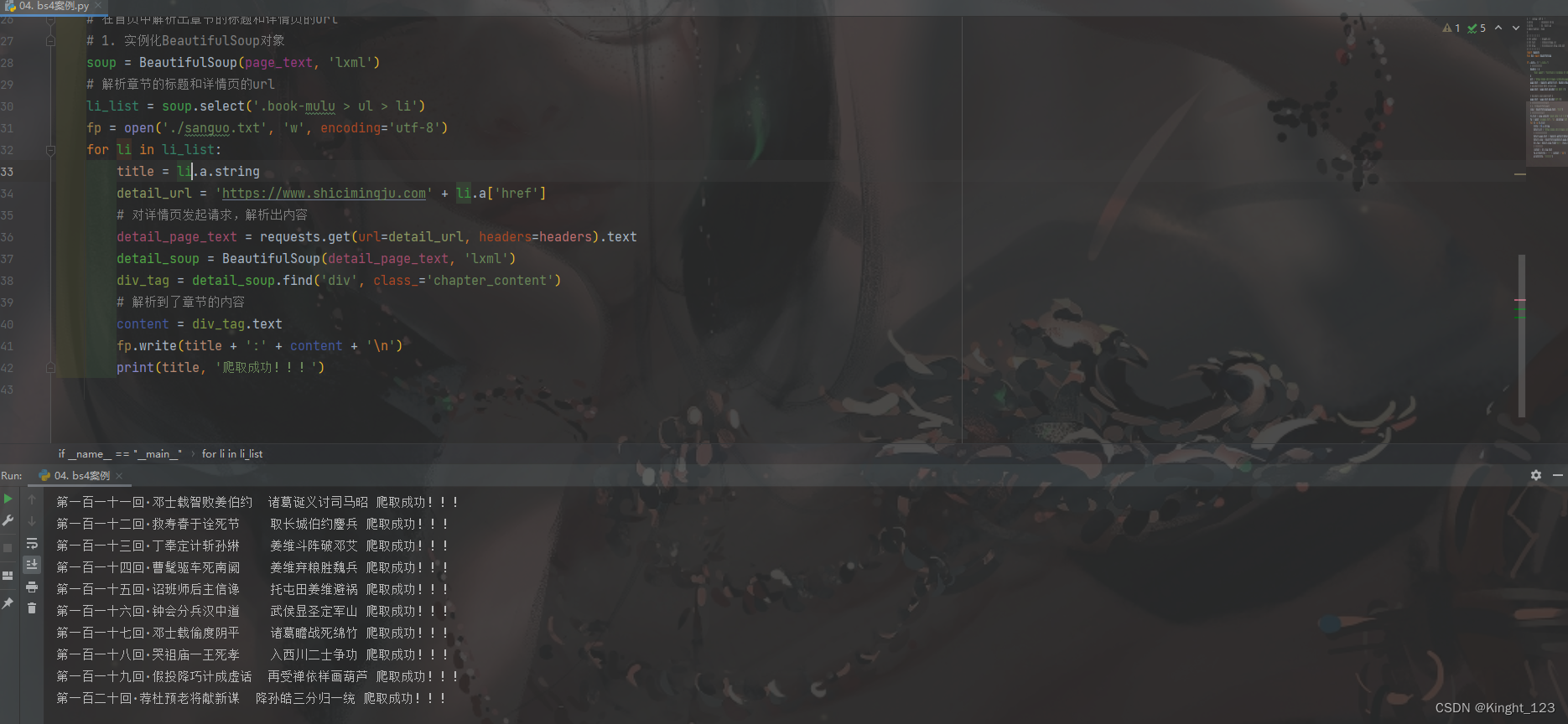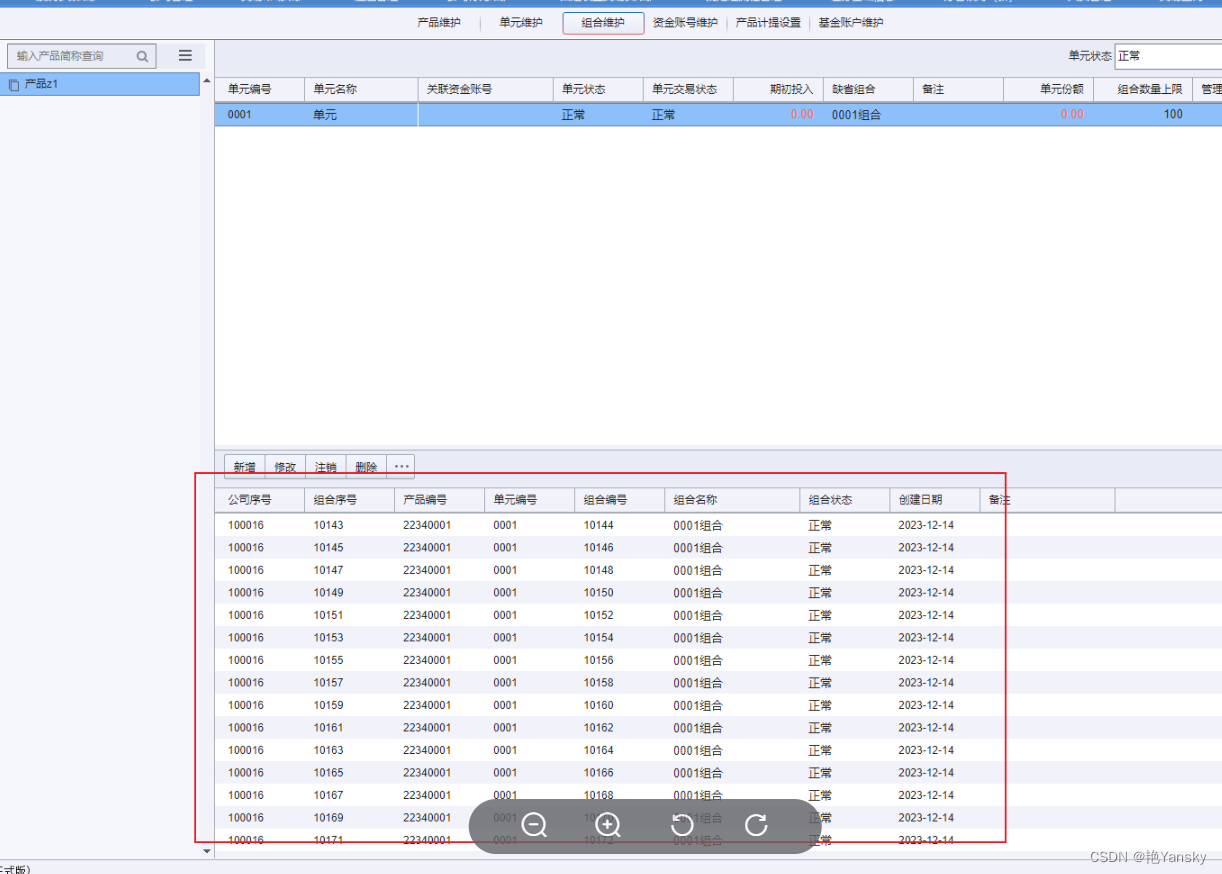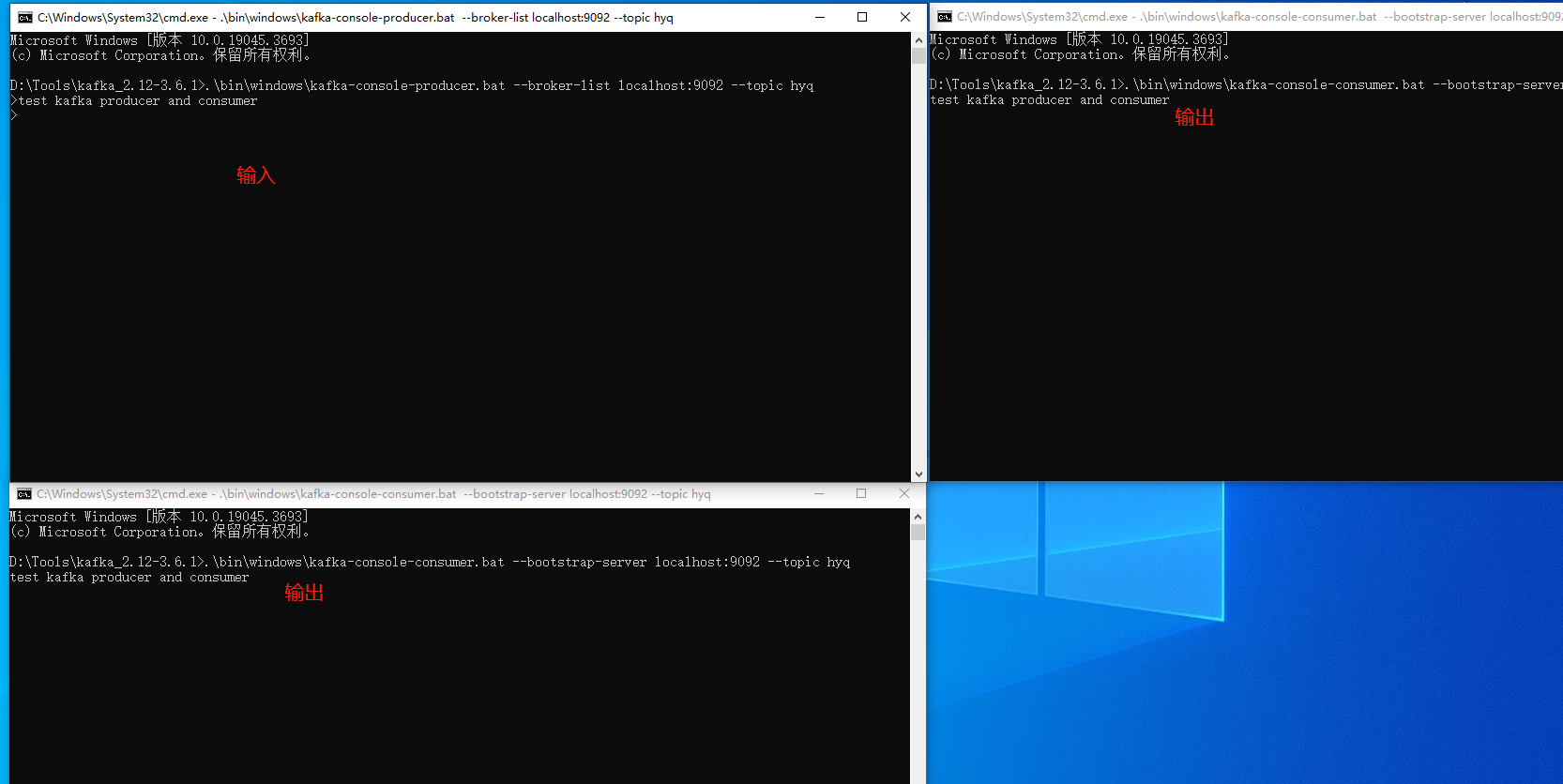1.项目用到,不是核心
我们干系统开发,不免要考虑一个点,数据的重复提交。
我想我们之前如果要校验数据重复提交要求,会怎么干?会在业务层,对数据库操作,查询数据是否存在,存在就禁止插入数据; 但是吧,我们每次crud操作都会连接一次数据库,也就是占用内存,那么在项目中大量crud操作面前,我们通过这种方式来实现数据的重复提交,显然不大可取。因此我们采用通过 redis + 拦截器来实现防止数据重复提交。来分担数据库连接的压力。
数据重复提交有啥坏处?
- 数据完整性:如果用户在短时间内多次提交相同的表单,可能会导致数据重复或产生不一致的数据。
- 用户体验:如果用户不小心重复提交了表单,而系统没有进行相应的处理,用户可能会收到错误或重复的信息,这会影响用户体验。
- 性能考虑:大量的重复提交可能会对服务器造成不必要的负担,影响系统的性能。
- 安全考虑:在某些场景下,重复提交可能会被用于发起攻击,如DoS攻击。
我们要考虑一个事情,就是我们要验证数据的重复提交: 首先第一次提交的数据肯定是要被存储的,当而第二次往后,每次提交数据都会与之前的数据产生比对从而验证数据重复提交,但是通常情况下我们不仅要对提交数据重复性校验,还有前后提交时间差的校验。
下面,就有我通过redis + 拦截器来实现如何防止数据重复提交。
项目依赖
<dependencies>
<!--boot-web-->
<dependency>
<groupId>org.springframework.boot</groupId>
<artifactId>spring-boot-starter-web</artifactId>
</dependency>
<!--hutool-->
<dependency>
<groupId>cn.hutool</groupId>
<artifactId>hutool-all</artifactId>
<version>5.8.11</version>
<exclusions>
<exclusion>
<groupId>cn.hutool</groupId>
<artifactId>hutool-json</artifactId>
</exclusion>
</exclusions>
</dependency>
<!--fastJson2-->
<dependency>
<groupId>com.alibaba.fastjson2</groupId>
<artifactId>fastjson2</artifactId>
<version>2.0.19.graal</version>
</dependency>
<!--redis-->
<dependency>
<groupId>org.springframework.boot</groupId>
<artifactId>spring-boot-starter-data-redis</artifactId>
</dependency>
<!--commons-pools连接池,lettuce没有内置的数据库连接池所以要用第三方的 -->
<dependency>
<groupId>org.apache.commons</groupId>
<artifactId>commons-pool2</artifactId>
</dependency>
<!--boot-test-->
<dependency>
<groupId>org.springframework.boot</groupId>
<artifactId>spring-boot-starter-test</artifactId>
<scope>test</scope>
</dependency>
</dependencies>
<dependencyManagement>
<dependencies>
<dependency>
<groupId>org.springframework.boot</groupId>
<artifactId>spring-boot-dependencies</artifactId>
<version>2.6.13</version>
<type>pom</type>
<scope>import</scope>
</dependency>
</dependencies>
</dependencyManagement>application.yml
主要是redis的配置。
spring:
# redis 配置
redis:
# 地址
host: 192.168.233.131
# 端口,默认为6379
port: 6379
# 数据库索引
database: 0
# 密码
password:
# 连接超时时间
timeout: 10s
lettuce:
pool:
# 连接池中的最小空闲连接
min-idle: 0
# 连接池中的最大空闲连接
max-idle: 8
# 连接池的最大数据库连接数
max-active: 8
# #连接池最大阻塞等待时间(使用负值表示没有限制)
max-wait: -1ms
FastJson2JsonRedisSerializer
主要负责对存入redis的key、value进行序列化。
/**
* Redis使用FastJson序列化
*
* @author jzm
*/
public class FastJson2JsonRedisSerializer<T> implements RedisSerializer<T>
{
public static final Charset DEFAULT_CHARSET = Charset.forName("UTF-8");
static final Filter AUTO_TYPE_FILTER = JSONReader.autoTypeFilter(Constants.JSON_WHITELIST_STR);
private Class<T> clazz;
public FastJson2JsonRedisSerializer(Class<T> clazz)
{
super();
this.clazz = clazz;
}
@Override
public byte[] serialize(T t) throws SerializationException
{
if (t == null)
{
return new byte[0];
}
return JSON.toJSONString(t, JSONWriter.Feature.WriteClassName).getBytes(DEFAULT_CHARSET);
}
@Override
public T deserialize(byte[] bytes) throws SerializationException
{
if (bytes == null || bytes.length <= 0)
{
return null;
}
String str = new String(bytes, DEFAULT_CHARSET);
return JSON.parseObject(str, clazz, AUTO_TYPE_FILTER);
}
}RedisConfig
redis相关配置。定义通过redisTemplate,设置到redis中的key、value的序列化方式。
/**
* redis配置
*
* @author jzm
*/
@Configuration
@EnableCaching
public class RedisConfig extends CachingConfigurerSupport
{
@Bean
@SuppressWarnings(value = {"unchecked", "rawtypes"})
// 设置key、value的序列化方式
public RedisTemplate<Object, Object> redisTemplate(RedisConnectionFactory connectionFactory)
{
RedisTemplate<Object, Object> template = new RedisTemplate<>();
template.setConnectionFactory(connectionFactory);
FastJson2JsonRedisSerializer serializer = new FastJson2JsonRedisSerializer(Object.class);
// 使用StringRedisSerializer来序列化和反序列化redis的key值
template.setKeySerializer(new StringRedisSerializer());
template.setValueSerializer(serializer);
// Hash的key也采用StringRedisSerializer的序列化方式
template.setHashKeySerializer(new StringRedisSerializer());
template.setHashValueSerializer(serializer);
template.afterPropertiesSet();
return template;
}
@Bean
public DefaultRedisScript<Long> limitScript()
{
DefaultRedisScript<Long> redisScript = new DefaultRedisScript<>();
redisScript.setScriptText(limitScriptText());
redisScript.setResultType(Long.class);
return redisScript;
}
/**
* 限流脚本
*/
private String limitScriptText()
{
return "local key = KEYS[1]\n" +
"local count = tonumber(ARGV[1])\n" +
"local time = tonumber(ARGV[2])\n" +
"local current = redis.call('get', key);\n" +
"if current and tonumber(current) > count then\n" +
" return tonumber(current);\n" +
"end\n" +
"current = redis.call('incr', key)\n" +
"if tonumber(current) == 1 then\n" +
" redis.call('expire', key, time)\n" +
"end\n" +
"return tonumber(current);";
}
}WebAppConfig
web mvc的相关配置。这里主要是注册自定义拦截器。
/**
* web 配置
*
* @author: jzm
* @date: 2024-01-25 11:30
**/
@Configuration
public class WebAppConfig implements WebMvcConfigurer
{
@Autowired
private SameUrlDataInterceptor sameUrlDataInterceptor;
// 注册拦截器
@Override
public void addInterceptors(InterceptorRegistry registry)
{
// 可添加多个
registry.addInterceptor(sameUrlDataInterceptor).addPathPatterns("/**");
}
}项目用到的常量类
常量类。直接CV。
/**
* 缓存的key 常量
*
* @author jzm
*/
public class CacheConstants
{
/**
* 登录用户 redis key
*/
public static final String LOGIN_TOKEN_KEY = "login_tokens:";
/**
* 验证码 redis key
*/
public static final String CAPTCHA_CODE_KEY = "captcha_codes:";
/**
* 参数管理 cache key
*/
public static final String SYS_CONFIG_KEY = "sys_config:";
/**
* 字典管理 cache key
*/
public static final String SYS_DICT_KEY = "sys_dict:";
/**
* 防重提交 redis key
*/
public static final String REPEAT_SUBMIT_KEY = "repeat_submit:";
/**
* 限流 redis key
*/
public static final String RATE_LIMIT_KEY = "rate_limit:";
/**
* 登录账户密码错误次数 redis key
*/
public static final String PWD_ERR_CNT_KEY = "pwd_err_cnt:";
}/**
* 通用常量信息
*
* @author jzm
*/
public class Constants
{
/**
* UTF-8 字符集
*/
public static final String UTF8 = "UTF-8";
/**
* GBK 字符集
*/
public static final String GBK = "GBK";
/**
* www主域
*/
public static final String WWW = "www.";
/**
* http请求
*/
public static final String HTTP = "http://";
/**
* https请求
*/
public static final String HTTPS = "https://";
/**
* 通用成功标识
*/
public static final String SUCCESS = "0";
/**
* 通用失败标识
*/
public static final String FAIL = "1";
/**
* 登录成功
*/
public static final String LOGIN_SUCCESS = "Success";
/**
* 注销
*/
public static final String LOGOUT = "Logout";
/**
* 注册
*/
public static final String REGISTER = "Register";
/**
* 登录失败
*/
public static final String LOGIN_FAIL = "Error";
/**
* 所有权限标识
*/
public static final String ALL_PERMISSION = "*:*:*";
/**
* 管理员角色权限标识
*/
public static final String SUPER_ADMIN = "admin";
/**
* 角色权限分隔符
*/
public static final String ROLE_DELIMETER = ",";
/**
* 权限标识分隔符
*/
public static final String PERMISSION_DELIMETER = ",";
/**
* 验证码有效期(分钟)
*/
public static final Integer CAPTCHA_EXPIRATION = 2;
/**
* 令牌
*/
public static final String TOKEN = "token";
/**
* 令牌前缀
*/
public static final String TOKEN_PREFIX = "Bearer ";
/**
* 令牌前缀
*/
public static final String LOGIN_USER_KEY = "login_user_key";
/**
* 用户ID
*/
public static final String JWT_USERID = "userid";
/**
* 用户名称
*/
public static final String JWT_USERNAME = "sub";
/**
* 用户头像
*/
public static final String JWT_AVATAR = "avatar";
/**
* 创建时间
*/
public static final String JWT_CREATED = "created";
/**
* 用户权限
*/
public static final String JWT_AUTHORITIES = "authorities";
/**
* 资源映射路径 前缀
*/
public static final String RESOURCE_PREFIX = "/profile";
/**
* RMI 远程方法调用
*/
public static final String LOOKUP_RMI = "rmi:";
/**
* LDAP 远程方法调用
*/
public static final String LOOKUP_LDAP = "ldap:";
/**
* LDAPS 远程方法调用
*/
public static final String LOOKUP_LDAPS = "ldaps:";
/**
* 自动识别json对象白名单配置(仅允许解析的包名,范围越小越安全)
*/
public static final String[] JSON_WHITELIST_STR = {"org.springframework", "com.ruoyi"};
/**
* 定时任务白名单配置(仅允许访问的包名,如其他需要可以自行添加)
*/
public static final String[] JOB_WHITELIST_STR = {"com.ruoyi"};
/**
* 定时任务违规的字符
*/
public static final String[] JOB_ERROR_STR = {"java.net.URL", "javax.naming.InitialContext", "org.yaml.snakeyaml",
"org.springframework", "org.apache", "com.ruoyi.common.utils.file", "com.ruoyi.common.config"};
}/**
* 返回状态码
*
* @author jzm
*/
public class HttpStatus
{
/**
* 操作成功
*/
public static final int SUCCESS = 200;
/**
* 对象创建成功
*/
public static final int CREATED = 201;
/**
* 请求已经被接受
*/
public static final int ACCEPTED = 202;
/**
* 操作已经执行成功,但是没有返回数据
*/
public static final int NO_CONTENT = 204;
/**
* 资源已被移除
*/
public static final int MOVED_PERM = 301;
/**
* 重定向
*/
public static final int SEE_OTHER = 303;
/**
* 资源没有被修改
*/
public static final int NOT_MODIFIED = 304;
/**
* 参数列表错误(缺少,格式不匹配)
*/
public static final int BAD_REQUEST = 400;
/**
* 未授权
*/
public static final int UNAUTHORIZED = 401;
/**
* 访问受限,授权过期
*/
public static final int FORBIDDEN = 403;
/**
* 资源,服务未找到
*/
public static final int NOT_FOUND = 404;
/**
* 不允许的http方法
*/
public static final int BAD_METHOD = 405;
/**
* 资源冲突,或者资源被锁
*/
public static final int CONFLICT = 409;
/**
* 不支持的数据,媒体类型
*/
public static final int UNSUPPORTED_TYPE = 415;
/**
* 系统内部错误
*/
public static final int ERROR = 500;
/**
* 接口未实现
*/
public static final int NOT_IMPLEMENTED = 501;
/**
* 系统警告消息
*/
public static final int WARN = 601;
}
项目用到的工具类
也是直接。CV。
RedisCache
/**
* redis 工具类
*
* @author jzm
**/
@SuppressWarnings(value = {"unchecked", "rawtypes"})
@Component
public class RedisCache
{
@Autowired
public RedisTemplate redisTemplate;
/**
* 缓存基本的对象,Integer、String、实体类等
*
* @param key 缓存的键值
* @param value 缓存的值
*/
public <T> void setCacheObject(final String key, final T value)
{
redisTemplate.opsForValue().set(key, value);
}
/**
* 缓存基本的对象,Integer、String、实体类等
*
* @param key 缓存的键值
* @param value 缓存的值
* @param timeout 时间
* @param timeUnit 时间颗粒度
*/
public <T> void setCacheObject(final String key, final T value, final Integer timeout, final TimeUnit timeUnit)
{
redisTemplate.opsForValue().set(key, value, timeout, timeUnit);
}
/**
* 设置有效时间
*
* @param key Redis键
* @param timeout 超时时间
* @return true=设置成功;false=设置失败
*/
public boolean expire(final String key, final long timeout)
{
return expire(key, timeout, TimeUnit.SECONDS);
}
/**
* 设置有效时间
*
* @param key Redis键
* @param timeout 超时时间
* @param unit 时间单位
* @return true=设置成功;false=设置失败
*/
public boolean expire(final String key, final long timeout, final TimeUnit unit)
{
return redisTemplate.expire(key, timeout, unit);
}
/**
* 获取有效时间
*
* @param key Redis键
* @return 有效时间
*/
public long getExpire(final String key)
{
return redisTemplate.getExpire(key);
}
/**
* 判断 key是否存在
*
* @param key 键
* @return true 存在 false不存在
*/
public Boolean hasKey(String key)
{
return redisTemplate.hasKey(key);
}
/**
* 获得缓存的基本对象。
*
* @param key 缓存键值
* @return 缓存键值对应的数据
*/
public <T> T getCacheObject(final String key)
{
ValueOperations<String, T> operation = redisTemplate.opsForValue();
return operation.get(key);
}
/**
* 删除单个对象
*
* @param key
*/
public boolean deleteObject(final String key)
{
return redisTemplate.delete(key);
}
/**
* 删除集合对象
*
* @param collection 多个对象
* @return
*/
public boolean deleteObject(final Collection collection)
{
return redisTemplate.delete(collection) > 0;
}
/**
* 缓存List数据
*
* @param key 缓存的键值
* @param dataList 待缓存的List数据
* @return 缓存的对象
*/
public <T> long setCacheList(final String key, final List<T> dataList)
{
Long count = redisTemplate.opsForList().rightPushAll(key, dataList);
return count == null ? 0 : count;
}
/**
* 获得缓存的list对象
*
* @param key 缓存的键值
* @return 缓存键值对应的数据
*/
public <T> List<T> getCacheList(final String key)
{
return redisTemplate.opsForList().range(key, 0, -1);
}
/**
* 缓存Set
*
* @param key 缓存键值
* @param dataSet 缓存的数据
* @return 缓存数据的对象
*/
public <T> BoundSetOperations<String, T> setCacheSet(final String key, final Set<T> dataSet)
{
BoundSetOperations<String, T> setOperation = redisTemplate.boundSetOps(key);
Iterator<T> it = dataSet.iterator();
while (it.hasNext())
{
setOperation.add(it.next());
}
return setOperation;
}
/**
* 获得缓存的set
*
* @param key
* @return
*/
public <T> Set<T> getCacheSet(final String key)
{
return redisTemplate.opsForSet().members(key);
}
/**
* 缓存Map
*
* @param key
* @param dataMap
*/
public <T> void setCacheMap(final String key, final Map<String, T> dataMap)
{
if (dataMap != null)
{
redisTemplate.opsForHash().putAll(key, dataMap);
}
}
/**
* 获得缓存的Map
*
* @param key
* @return
*/
public <T> Map<String, T> getCacheMap(final String key)
{
return redisTemplate.opsForHash().entries(key);
}
/**
* 往Hash中存入数据
*
* @param key Redis键
* @param hKey Hash键
* @param value 值
*/
public <T> void setCacheMapValue(final String key, final String hKey, final T value)
{
redisTemplate.opsForHash().put(key, hKey, value);
}
/**
* 获取Hash中的数据
*
* @param key Redis键
* @param hKey Hash键
* @return Hash中的对象
*/
public <T> T getCacheMapValue(final String key, final String hKey)
{
HashOperations<String, String, T> opsForHash = redisTemplate.opsForHash();
return opsForHash.get(key, hKey);
}
/**
* 获取多个Hash中的数据
*
* @param key Redis键
* @param hKeys Hash键集合
* @return Hash对象集合
*/
public <T> List<T> getMultiCacheMapValue(final String key, final Collection<Object> hKeys)
{
return redisTemplate.opsForHash().multiGet(key, hKeys);
}
/**
* 删除Hash中的某条数据
*
* @param key Redis键
* @param hKey Hash键
* @return 是否成功
*/
public boolean deleteCacheMapValue(final String key, final String hKey)
{
return redisTemplate.opsForHash().delete(key, hKey) > 0;
}
/**
* 获得缓存的基本对象列表
*
* @param pattern 字符串前缀
* @return 对象列表
*/
public Collection<String> keys(final String pattern)
{
return redisTemplate.keys(pattern);
}
}HttpHelper
主要是为了读取http请求体的数据。
/**
* 通用http工具封装
*
* @author ruoyi
*/
public class HttpHelper
{
private static final Logger LOGGER = LoggerFactory.getLogger(HttpHelper.class);
public static String getBodyString(ServletRequest request)
{
StringBuilder sb = new StringBuilder();
BufferedReader reader = null;
try (InputStream inputStream = request.getInputStream())
{
reader = new BufferedReader(new InputStreamReader(inputStream, StandardCharsets.UTF_8));
String line = "";
while ((line = reader.readLine()) != null)
{
sb.append(line);
}
} catch (IOException e)
{
LOGGER.warn("getBodyString出现问题!");
} finally
{
if (reader != null)
{
try
{
reader.close();
} catch (IOException e)
{
LOGGER.error("Exceptions:", e.getMessage());
}
}
}
return sb.toString();
}
}StringUtils
/**
* 字符串工具类
*
* @author jzm
*/
public class StringUtils extends StrUtil
{
/**
* 空字符串
*/
private static final String NULLSTR = "";
/**
* 下划线
*/
private static final char SEPARATOR = '_';
/**
* 获取参数不为空值
*
* @param value defaultValue 要判断的value
* @return value 返回值
*/
public static <T> T nvl(T value, T defaultValue)
{
return value != null ? value : defaultValue;
}
/**
* * 判断一个Collection是否为空, 包含List,Set,Queue
*
* @param coll 要判断的Collection
* @return true:为空 false:非空
*/
public static boolean isEmpty(Collection<?> coll)
{
return isNull(coll) || coll.isEmpty();
}
/**
* * 判断一个Collection是否非空,包含List,Set,Queue
*
* @param coll 要判断的Collection
* @return true:非空 false:空
*/
public static boolean isNotEmpty(Collection<?> coll)
{
return !isEmpty(coll);
}
/**
* * 判断一个对象数组是否为空
*
* @param objects 要判断的对象数组
* * @return true:为空 false:非空
*/
public static boolean isEmpty(Object[] objects)
{
return isNull(objects) || (objects.length == 0);
}
/**
* * 判断一个对象数组是否非空
*
* @param objects 要判断的对象数组
* @return true:非空 false:空
*/
public static boolean isNotEmpty(Object[] objects)
{
return !isEmpty(objects);
}
/**
* * 判断一个Map是否为空
*
* @param map 要判断的Map
* @return true:为空 false:非空
*/
public static boolean isEmpty(Map<?, ?> map)
{
return isNull(map) || map.isEmpty();
}
/**
* * 判断一个Map是否为空
*
* @param map 要判断的Map
* @return true:非空 false:空
*/
public static boolean isNotEmpty(Map<?, ?> map)
{
return !isEmpty(map);
}
/**
* * 判断一个字符串是否为空串
*
* @param str String
* @return true:为空 false:非空
*/
public static boolean isEmpty(String str)
{
return isNull(str) || NULLSTR.equals(str.trim());
}
/**
* * 判断一个字符串是否为非空串
*
* @param str String
* @return true:非空串 false:空串
*/
public static boolean isNotEmpty(String str)
{
return !isEmpty(str);
}
/**
* * 判断一个对象是否为空
*
* @param object Object
* @return true:为空 false:非空
*/
public static boolean isNull(Object object)
{
return object == null;
}
/**
* * 判断一个对象是否非空
*
* @param object Object
* @return true:非空 false:空
*/
public static boolean isNotNull(Object object)
{
return !isNull(object);
}
public static boolean inStringIgnoreCase(String str, String... strs)
{
if (str != null && strs != null)
{
for (String s : strs)
{
if (str.equalsIgnoreCase(s))
{
return true;
}
}
}
return false;
}
}ServletUtils
客户端工具类
/**
* 客户端工具类
*
* @author Jzm
*/
public class ServletUtils
{
/**
* 获取String参数
*/
public static String getParameter(String name)
{
return getRequest().getParameter(name);
}
/**
* 获取String参数
*/
public static String getParameter(String name, String defaultValue)
{
return Convert.toStr(getRequest().getParameter(name), defaultValue);
}
/**
* 获取Integer参数
*/
public static Integer getParameterToInt(String name)
{
return Convert.toInt(getRequest().getParameter(name));
}
/**
* 获取Integer参数
*/
public static Integer getParameterToInt(String name, Integer defaultValue)
{
return Convert.toInt(getRequest().getParameter(name), defaultValue);
}
/**
* 获取Boolean参数
*/
public static Boolean getParameterToBool(String name)
{
return Convert.toBool(getRequest().getParameter(name));
}
/**
* 获取Boolean参数
*/
public static Boolean getParameterToBool(String name, Boolean defaultValue)
{
return Convert.toBool(getRequest().getParameter(name), defaultValue);
}
/**
* 获得所有请求参数
*
* @param request 请求对象{@link ServletRequest}
* @return Map
*/
public static Map<String, String[]> getParams(ServletRequest request)
{
final Map<String, String[]> map = request.getParameterMap();
return Collections.unmodifiableMap(map);
}
/**
* 获得所有请求参数
*
* @param request 请求对象{@link ServletRequest}
* @return Map
*/
public static Map<String, String> getParamMap(ServletRequest request)
{
Map<String, String> params = new HashMap<>();
for (Map.Entry<String, String[]> entry : getParams(request).entrySet())
{
params.put(entry.getKey(), StringUtils.join(",", entry.getValue()));
}
return params;
}
/**
* 获取request
*/
public static HttpServletRequest getRequest()
{
return getRequestAttributes().getRequest();
}
/**
* 获取response
*/
public static HttpServletResponse getResponse()
{
return getRequestAttributes().getResponse();
}
/**
* 获取session
*/
public static HttpSession getSession()
{
return getRequest().getSession();
}
public static ServletRequestAttributes getRequestAttributes()
{
RequestAttributes attributes = RequestContextHolder.getRequestAttributes();
return (ServletRequestAttributes) attributes;
}
/**
* 将字符串渲染到客户端
*
* @param response 渲染对象
* @param string 待渲染的字符串
*/
public static void renderString(HttpServletResponse response, String string)
{
try
{
response.setStatus(200);
response.setContentType("application/json");
response.setCharacterEncoding("utf-8");
response.getWriter().print(string);
} catch (IOException e)
{
e.printStackTrace();
}
}
/**
* 是否是Ajax异步请求
*
* @param request
*/
public static boolean isAjaxRequest(HttpServletRequest request)
{
String accept = request.getHeader("accept");
if (accept != null && accept.contains("application/json"))
{
return true;
}
String xRequestedWith = request.getHeader("X-Requested-With");
if (xRequestedWith != null && xRequestedWith.contains("XMLHttpRequest"))
{
return true;
}
String uri = request.getRequestURI();
if (StringUtils.inStringIgnoreCase(uri, ".json", ".xml"))
{
return true;
}
String ajax = request.getParameter("__ajax");
return StringUtils.inStringIgnoreCase(ajax, "json", "xml");
}
/**
* 内容编码
*
* @param str 内容
* @return 编码后的内容
*/
public static String urlEncode(String str)
{
try
{
return URLEncoder.encode(str, Constants.UTF8);
} catch (UnsupportedEncodingException e)
{
return StringUtils.EMPTY;
}
}
/**
* 内容解码
*
* @param str 内容
* @return 解码后的内容
*/
public static String urlDecode(String str)
{
try
{
return URLDecoder.decode(str, Constants.UTF8);
} catch (UnsupportedEncodingException e)
{
return StringUtils.EMPTY;
}
}
}项目用到的模型
AjaxResult: 公共响应类
/**
* 操作消息提醒
*
* @author jzm
*/
public class AjaxResult extends HashMap<String, Object>
{
private static final long serialVersionUID = 1L;
/**
* 状态码
*/
public static final String CODE_TAG = "code";
/**
* 返回内容
*/
public static final String MSG_TAG = "msg";
/**
* 数据对象
*/
public static final String DATA_TAG = "data";
/**
* 初始化一个新创建的 AjaxResult 对象,使其表示一个空消息。
*/
public AjaxResult()
{
}
/**
* 初始化一个新创建的 AjaxResult 对象
*
* @param code 状态码
* @param msg 返回内容
*/
public AjaxResult(int code, String msg)
{
super.put(CODE_TAG, code);
super.put(MSG_TAG, msg);
}
/**
* 初始化一个新创建的 AjaxResult 对象
*
* @param code 状态码
* @param msg 返回内容
* @param data 数据对象
*/
public AjaxResult(int code, String msg, Object data)
{
super.put(CODE_TAG, code);
super.put(MSG_TAG, msg);
if (StringUtils.isNotNull(data))
{
super.put(DATA_TAG, data);
}
}
/**
* 返回成功消息
*
* @return 成功消息
*/
public static AjaxResult success()
{
return AjaxResult.success("操作成功");
}
/**
* 返回成功数据
*
* @return 成功消息
*/
public static AjaxResult success(Object data)
{
return AjaxResult.success("操作成功", data);
}
/**
* 返回成功消息
*
* @param msg 返回内容
* @return 成功消息
*/
public static AjaxResult success(String msg)
{
return AjaxResult.success(msg, null);
}
/**
* 返回成功消息
*
* @param msg 返回内容
* @param data 数据对象
* @return 成功消息
*/
public static AjaxResult success(String msg, Object data)
{
return new AjaxResult(HttpStatus.SUCCESS, msg, data);
}
/**
* 返回警告消息
*
* @param msg 返回内容
* @return 警告消息
*/
public static AjaxResult warn(String msg)
{
return AjaxResult.warn(msg, null);
}
/**
* 返回警告消息
*
* @param msg 返回内容
* @param data 数据对象
* @return 警告消息
*/
public static AjaxResult warn(String msg, Object data)
{
return new AjaxResult(HttpStatus.WARN, msg, data);
}
/**
* 返回错误消息
*
* @return 错误消息
*/
public static AjaxResult error()
{
return AjaxResult.error("操作失败");
}
/**
* 返回错误消息
*
* @param msg 返回内容
* @return 错误消息
*/
public static AjaxResult error(String msg)
{
return AjaxResult.error(msg, null);
}
/**
* 返回错误消息
*
* @param msg 返回内容
* @param data 数据对象
* @return 错误消息
*/
public static AjaxResult error(String msg, Object data)
{
return new AjaxResult(HttpStatus.ERROR, msg, data);
}
/**
* 返回错误消息
*
* @param code 状态码
* @param msg 返回内容
* @return 错误消息
*/
public static AjaxResult error(int code, String msg)
{
return new AjaxResult(code, msg, null);
}
/**
* 是否为成功消息
*
* @return 结果
*/
public boolean isSuccess()
{
return Objects.equals(HttpStatus.SUCCESS, this.get(CODE_TAG));
}
/**
* 是否为警告消息
*
* @return 结果
*/
public boolean isWarn()
{
return Objects.equals(HttpStatus.WARN, this.get(CODE_TAG));
}
/**
* 是否为错误消息
*
* @return 结果
*/
public boolean isError()
{
return Objects.equals(HttpStatus.ERROR, this.get(CODE_TAG));
}
/**
* 方便链式调用
*
* @param key 键
* @param value 值
* @return 数据对象
*/
@Override
public AjaxResult put(String key, Object value)
{
super.put(key, value);
return this;
}
}2.核心
RepeatSubmit
重复提交注解。主要用来设置前后提交数据时间差,至少要大于的时间差的上限。
/**
* 自定义注解防止表单重复提交
*
* @author jzm
*/
@Inherited
@Target(ElementType.METHOD)
@Retention(RetentionPolicy.RUNTIME)
@Documented
public @interface RepeatSubmit
{
/**
* 间隔时间(ms),小于此时间视为重复提交
*/
public int interval() default 5000;
/**
* 提示消息
*/
public String message() default "不允许重复提交,请稍候再试";
}RepeatSubmitInterceptor
我们重复提交拦截器的抽象类。我们主要把 preHandle()方法给实现了,但是具体判断是否重复提交的逻辑交给子类来实现。好处是,灵活度高,代码可读性强。当我们有其他相似功能拦截器需要实现时,也只需要继承该类即可。
/**
* 拦截器
*
* @author: jzm
* @date: 2024-01-24 21:20
**/
public abstract class RepeatSubmitInterceptor implements HandlerInterceptor
{
@Override
public boolean preHandle(HttpServletRequest request, HttpServletResponse response, Object handler)
throws Exception
{
if (handler instanceof HandlerMethod)
{
HandlerMethod handlerMethod = (HandlerMethod) handler;
Method method = handlerMethod.getMethod();
RepeatSubmit repeatSubmit = method.getAnnotation(RepeatSubmit.class); // 能拿到处理方法
if (repeatSubmit != null)
{
if (this.isRepeatSubmit(request, repeatSubmit)) // 我们只有加了这个注解才表示限制重复提交
{
AjaxResult result = AjaxResult.error(repeatSubmit.message());
ServletUtils.renderString(response, JSONUtil.toJsonStr(result));
return false;
}
}
return true;
} else
{
return true;
}
}
/**
* 验证是否重复提交由子类实现具体的防重复提交的规则
*
* @param request 请求信息
* @param annotation 防重复注解参数
* @return 结果
* @throws Exception
*/
public abstract boolean isRepeatSubmit(HttpServletRequest request, RepeatSubmit annotation);
}SameUrlDataInterceptor
我们要具体判断数据是否重复提交的子类。最后,将这个注入spring容器里面,然后我们在webmvc里面进行配置就可以正常使用了。
/**
* 判断请求url和数据是否和上一次相同,
* 如果和上次相同,则是重复提交表单。 有效时间为10秒内。
*
* @author jzm
*/
// 我们使用拦截器,防止重复提交
// 现在我们知道,为什么不用面向切面了? 切面需要拦截controller里面的方法,但是若依controller分布比较分散
// 用拦截器,会拦截controller的映射接口
// 首先,我们知道 Handler能够获得映射为方法的Method
@Component
public class SameUrlDataInterceptor extends RepeatSubmitInterceptor
{
@Autowired
RedisCache redisCache;
public final String header = "Authorization";
public final String REPEAT_PARAMS = "repeatParams";
public final String REPEAT_TIME = "repeatTime";
@Override
public boolean isRepeatSubmit(HttpServletRequest request, RepeatSubmit annotation)
{
String nowParams = "";
// 拿请求body里面的内容
// 拷贝副本--给拦截器读取 clone拷贝不显示,对于引用对象,是引用拷贝...,
//
if (request instanceof RequestReaderHttpServletRequestWrapper)
{
RequestReaderHttpServletRequestWrapper requestWrapper = (RequestReaderHttpServletRequestWrapper) request;
nowParams = HttpHelper.getBodyString(requestWrapper);
}
// body参数为空,获取Parameter的数据
if (StringUtils.isEmpty(nowParams))
{
nowParams = JSONUtil.toJsonStr(request.getParameterMap());
}
// 当前数据映射,提交参数、提交时间
Map<String, Object> nowDataMap = new HashMap<String, Object>();
nowDataMap.put(REPEAT_PARAMS, nowParams);
nowDataMap.put(REPEAT_TIME, System.currentTimeMillis());
// 请求地址(作为存放cache的key值)
String uri = request.getRequestURI();
// 唯一值(没有消息头则使用请求地址)
String submitKey = StringUtils.trimToEmpty(request.getHeader(header));
// 唯一标识(指定key + url + 消息头)
String cacheRepeatKey = CacheConstants.REPEAT_SUBMIT_KEY + uri + submitKey;
// 如果 == null,代表提交过
Object sessionObj = redisCache.getCacheObject(cacheRepeatKey);
if (sessionObj != null)
{
Map<String, Object> sessionMap = (Map<String, Object>) sessionObj;
if (sessionMap.containsKey(uri))
{
Map<String, Object> preDataMap = (Map<String, Object>) sessionMap.get(uri);
// 两次提交内容一致 && 提交时间间隔差 < 要求时间段
if (compareParams(nowDataMap, preDataMap) && compareTime(nowDataMap, preDataMap, annotation.interval()))
{
return true;
}
}
}
HashMap<String, Object> cacheMap = new HashMap<>();
cacheMap.put(uri, nowDataMap);
redisCache.setCacheObject(cacheRepeatKey, cacheMap, annotation.interval(), TimeUnit.MILLISECONDS);
// 最后设置这上一个缓存对象重复提交时间
return false;
}
/**
* 判断参数是否相同
*/
private boolean compareParams(Map<String, Object> nowMap, Map<String, Object> preMap)
{
String nowParams = (String) nowMap.get(REPEAT_PARAMS);
String preParams = (String) preMap.get(REPEAT_PARAMS);
return nowParams.equals(preParams);
}
/**
* 判断两次间隔时间
*/
private boolean compareTime(Map<String, Object> nowMap, Map<String, Object> preMap, int interval)
{
long time1 = (Long) nowMap.get(REPEAT_TIME);
long time2 = (Long) preMap.get(REPEAT_TIME);
if ((time1 - time2) < interval)
{
return true;
}
return false;
}
}
RequestReaderHttpServletRequestWrapper
关于为什么要这个东西呢?我们post请求,拦截器要预先读取HtppServletRequest里面的body的数据,是通过io的方式,都知道io读取完毕之后,之前的数据是变为null的,但是,当我么后面的接口来委派的时候,也是通过io读取body。这时候bodu里面是null的。那么鸡儿就会报io错。
因此我们需要这个类建立复制流
/**
* 将请求包装,用来建立复制流
*
* @author jzm
*/
public class RequestReaderHttpServletRequestWrapper extends HttpServletRequestWrapper
{
private final byte[] body;
public RequestReaderHttpServletRequestWrapper(HttpServletRequest request) throws IOException
{
super(request);
body = HttpHelper.getBodyString(request).getBytes(Charset.forName("UTF-8"));
}
@Override
public BufferedReader getReader() throws IOException
{
return new BufferedReader(new InputStreamReader(getInputStream()));
}
@Override
public ServletInputStream getInputStream() throws IOException
{
final ByteArrayInputStream bais = new ByteArrayInputStream(body);
return new ServletInputStream()
{
@Override
public int read() throws IOException
{
return bais.read();
}
@Override
public boolean isFinished()
{
return false;
}
@Override
public boolean isReady()
{
return false;
}
@Override
public void setReadListener(ReadListener readListener)
{
}
};
}
}3.测试
测试用到的to
/**
* 测试to
*
* @author: jzm
* @date: 2024-01-25 14:26
**/
public class TestTo
{
public TestTo()
{
}
public String getName()
{
return name;
}
public void setName(String name)
{
this.name = name;
}
public Integer getAge()
{
return age;
}
public void setAge(Integer age)
{
this.age = age;
}
private String name;
private Integer age;
}我们新建controller用来测试。分别对get路径参数、post请求体中的数据进行来校验。
**
* 测试控制器
*
* @author: jzm
* @date: 2024-01-25 11:10
**/
@RestController
@ResponseBody
public class BaseController
{
private Logger log = LoggerFactory.getLogger(BaseController.class);
@RequestMapping(value = "/get/test", method = {RequestMethod.GET})
@RepeatSubmit(interval = 10 * 1000, message = "对不起您重复提交get请求!")
public AjaxResult getTest(@RequestParam("name") String name, @RequestParam("age") Integer age)
{
String res = "get_test:" + name + age;
log.info(res);
return AjaxResult.success(res);
}
@RequestMapping(value = "/post/test", method = {RequestMethod.POST})
@RepeatSubmit(interval = 10 * 1000, message = "对不起重复提交post请求")
public AjaxResult postTest(@RequestBody TestTo testTo)
{
String res = "post_test" + testTo.getName() + testTo.getAge();
log.info(res);
return AjaxResult.success(res);
}
}
我们启动项目,利用Apifox 来进行测试:
这时候打开Resp:免费Redis图形化界面(RESP)下载地址和连接步骤_resp下载-CSDN博客
发现数据是成功存入的,剩余7s过期,在10s之内,也就是数据没过期之前,在发送一次。

因此,确实数据重复提交了。
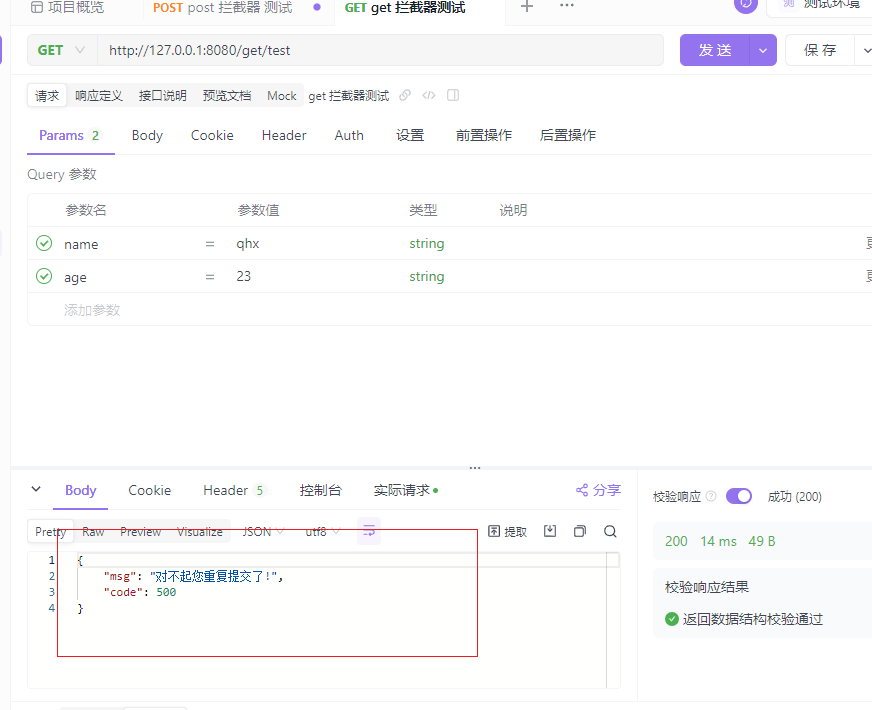
post请求测试。

